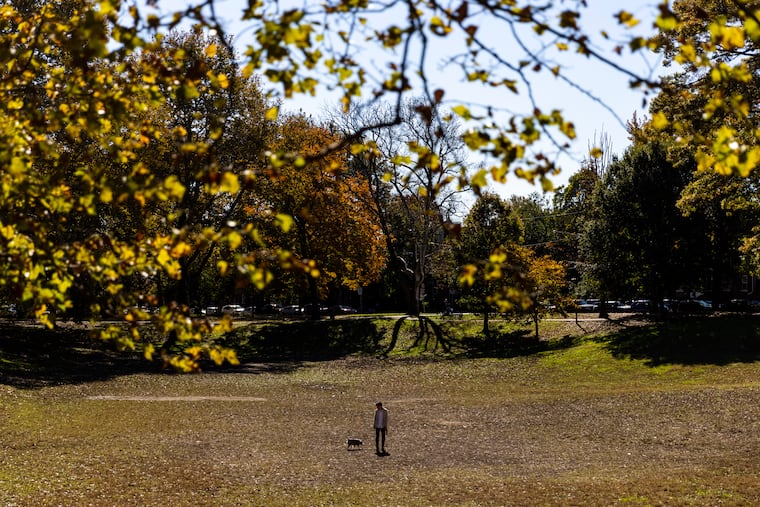Philly has its driest November in 45 years as rain and snow snub the East
November was dry pretty much everywhere east of the Continental Divide, and made for a rough start for ski resorts.

Having a snowless November is the norm for the Philadelphia region, but last month not much of anything fell from the skies around here — or in much of the nation.
While the Pacific Northwest was being deluged by those “atmospheric rivers” channeling off the tropical Pacific Ocean, Philadelphia received officially a paltry 0.46 inches of rain in November, the lowest November total since 1976, when Gerald Ford was in the White House, and third-driest in records dating to 1871.
Every county in Pennsylvania, New Jersey, Delaware, Maryland, Virginia, West Virginia, and New York reported significantly below-normal precipitation through Monday, according to the Middle Atlantic River Forecast Center, in State College.
» READ MORE: Flooding fears hit Northwest due to 'atmospheric river'
Nature was chary with precipitation in most areas east of the Continental Divide, said Brad Pugh, a meteorologist with the government’s Climate Prediction Center. Only a small percentage of ski trails in the Northeast are reported open.
In short, he said, “it’s been a dry pattern.”
As to what this will mean for the coming winter in Philadelphia, in all probability not much, Pugh said. In most instances, it would be almost impossible to underrate the atmosphere’s weather memory.
Why the dry?
Pugh attributed the dryness to sprawling rain-repelling high pressure centered in the Rockies.
In addition, the tropical Pacific is in a La Niña state, with sea-surface temperatures below normal, and typically that coincides with dryness across the southern United States. In some cases the dryness can creep northward across the Mid-Atlantic, he added.
By contrast, atmospheric rivers of moisture — narrow corridors of water vapor from the tropical Pacific that condense when they arrive over land — have inundated the Pacific Northwest with cosmic amounts of rain.
» READ MORE: Snow is snubbing Philly in January, and February is looking mild across the nation
Meanwhile, the jet stream winds that ferry weather systems have been split into northern and southern branches, said Paul Walker, senior meteorologist at AccuWeather Inc., leaving Philadelphia and vast areas of the nation cut off from storm traffic.
Another important source of moisture in the East, tropical storms, rather precipitously decided to call it a season. After Sam fizzled in early October, not a single hurricane formed in the Atlantic Basin. That was something of a surprise because La Niña normally promotes favorable conditions but lessening shearing winds that rip apart storms in the Atlantic Basin.
But the late-season shearing was quite strong, said Walker.
Pugh said that dryness in November usually is benign, given that the trees have shed their leaves and the foliage is about to go on its winter diet. And drought for now isn’t even a remote threat: Philadelphia has received 40.17 inches of precipitation for the year, about 2 inches above normal.
And what happened in November shouldn’t be viewed as a sign of what is — or isn’t — to come, he said.
The outlook
The climate center is saying odds favor above-normal temperatures for December and, more strongly, for the three-month meteorological winter, which begins Wednesday.
It sees equal chances of normal precipitation, but as for snowfall, it won’t go there, pleading limits of the science.
» READ MORE: Philly winter forecasts call for early snow, a cold December, and a 100% chance of uncertainty
Other meteorologists aren’t as shy about climbing out on that most tenuous of limbs. Fox 29′s Kathy Orr is calling for 19 inches of snow in Philly, about 4 inches below the 30-year average.
Cecily Tynan and Adam Joseph at 6ABC see 20 to 26 inches for Philadelphia, with the caveat that the atmosphere isn’t sharing any dominant signals in the early going.
AccuWeather’s seasonal forecast specialist, Paul Pastelok, also is going with 20 to 26 inches. He has predicted an early start to winter and had said that the city might even see snow by the end of November.
It didn’t, save for a few stray flakes in the region Monday. The region didn’t see much of anything for the entire month.